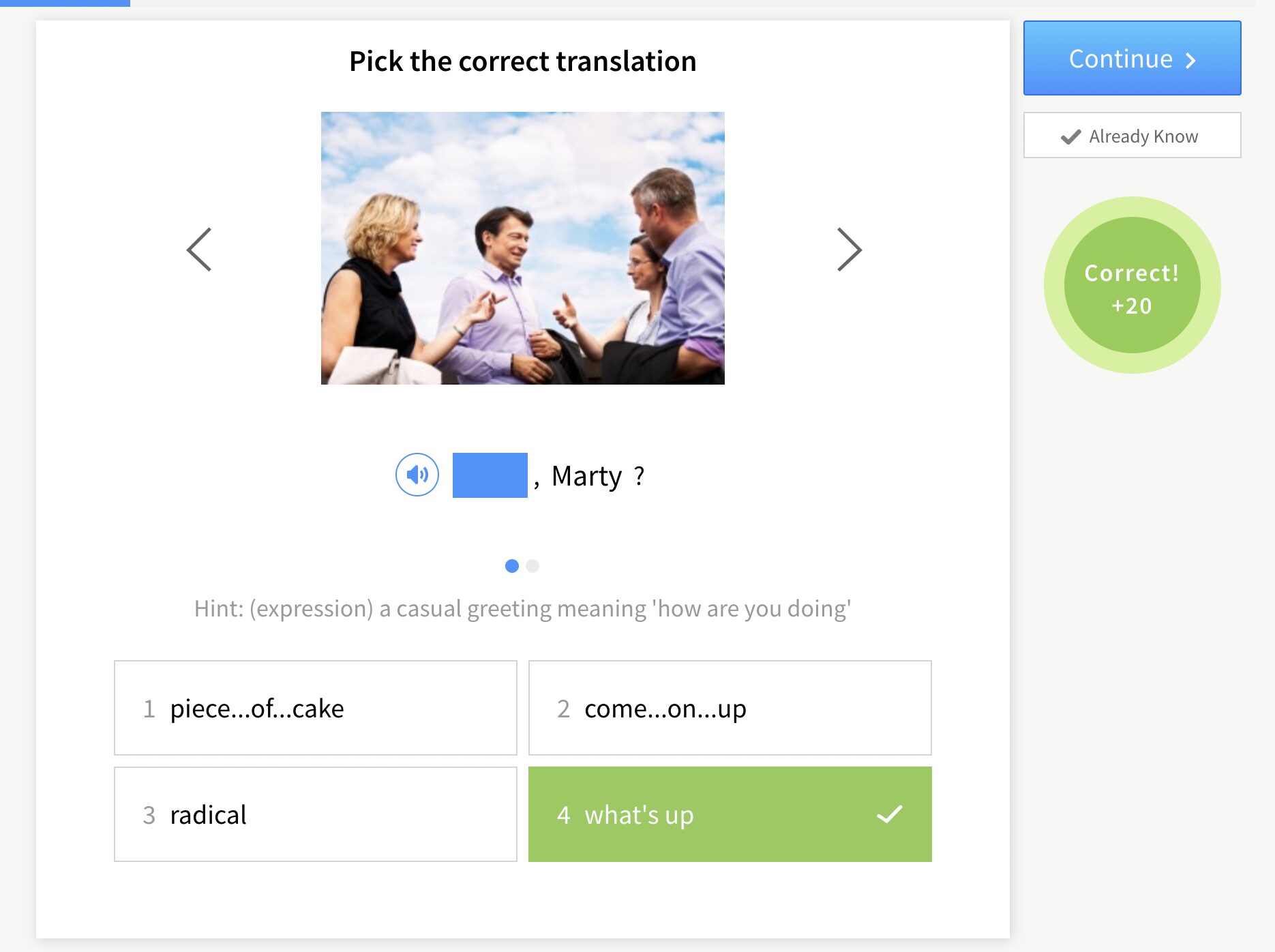Contents
- 1. Understand Planning, Success Criteria and Writing Structures
- 2. Build Strong Sentences by Beginning With Subjects and Verbs
- 3. Build Coherent Paragraphs
- 4. Order Words for the Most Powerful Impact
- 5. Paint Pictures With Words
- 6. Keep Sentences Fresh by Varying Their Length
- 7. Punctuate for Rhythm
- 8. Build on What Your Students Already Know
- 9. Let Your Students Communicate and Work Together
- 10. Engage Your Students When Presenting Writing Topics
- 11. Teach Your Students About Formal vs. Informal Writing
- And One More Thing…
11 Techniques to Boost Your Students’ ESL Writing Skills

The writer, an almost mythical creature—alone and aloof, at the mercy of some ethereal muse and her whims. How can we hope to inculcate the skills of the mysterious discipline in our ESL students when it can seem an insurmountable task for even native speakers?
Like much in life, discipline and craft can overcome most disadvantages for the struggling writer.
Get your students ready to apply some “wrist-grease” as we take a look at 11 techniques to take your students’ ESL writing skills to the next level.
Download: This blog post is available as a convenient and portable PDF that you can take anywhere. Click here to get a copy. (Download)
1. Understand Planning, Success Criteria and Writing Structures
Planning is an essential element for the successful completion of many tasks, and none more so than for ESL writing. Good planning helps a student maintain focus, producing cogent and coherent writing.
Planning involves the structure and purpose of a piece of writing. As a teacher, you know the importance of structure when developing your lesson plans, so let your students in on the secret!
Show your students how to develop an outline that will make their writing easier. Emphasize that a good outline can save them time thinking of what to write next, giving them a flow that will keep them confident and prevent midstream writer’s block.
How to implement it:
How can we implement planning and structure in ESL classes? ESL students will often need clear instructions to go about their planning, so it can be helpful to use writing frames. You can find a variety of free templates available online that are suited to an array of writing genres.
At the pre-writing stage, share success criteria with your students. The success criteria will include all the elements you expect to see in a successful piece of writing. This can even be turned into a simple checklist that students can use to check their work after completing their first draft.
You can develop a structure together or use a workable student handout. The student handout will provide a set structure for your students to follow. Including a section for topic sentences and supporting sentences on this handout or on the board will keep their writing minds organized and focused.
In English writing, there are many forms and styles to suit different writing scenarios and needs. Each lesson can incorporate a new topic and writing style for them to learn. For example:
- letters
- essays
- stories
- reports
- reviews
- emails
By teaching your students about planning and structure, their ESL writing will start to become more focused.
2. Build Strong Sentences by Beginning With Subjects and Verbs
We are all aware that writing in a new language is more involved than the simple case of substituting one word for another. Each language has its preferences for certain sentence structures and idiosyncrasies of meaning.
Linguists regard English primarily as a right-branching direction (RBD) language. Sentences begin with subject and verb, with relative clauses that branch to the right, just like in this sentence. Not all languages display this characteristic. Japanese, for example, is considered to be an LBD language.
How to implement it:
So, how can we make use of this theory in class? An excellent way for your students to really embed their understanding of the RBD sentence is to give them copies of newspapers. Have them hunt through articles identifying subjects and verbs and taking note of their position in sentences.
This will help make English’s RBD tendency apparent to them. For further practice, and to engage their own writing skills, have your students identify some sentences that are not RBD and rewrite them as RBD sentences.
The devil is in the details. Let’s take a look at an example:
Attired in a knee-length black cashmere cardigan, and sipping from a mug of Oolong tea, Jean, conscious that all eyes were on her as she stood silhouetted in the doorway, raised her hand in greeting.
Confused? No wonder! There are sixteen words before the subject is even mentioned, and a further fourteen before the important verb! Don’t be afraid to encourage students to break convoluted ideas into several simpler sentences to convey the same idea. Consider this rewrite in light of our understanding of the RBD nature of the English language:
Jean stood silhouetted in the doorway sipping her Oolong tea. Her long black cashmere cardigan hung down to her knees. All eyes were on her, as she raised her hand to greet them.
These exercises will build students’ confidence in writing strong sentences. It is important to point out to more advanced students that not every sentence needs to begin with the classic subject-verb construction. Where appropriate, model sentences that play with this sentence structure. For example, suggest opening a sentence with an introductory phrase or simply varying sentence length, to avoid a monotonous style, as is clear in the example above.
3. Build Coherent Paragraphs
Once your students have a solid understanding of how to create proper sentences, you can move them into paragraphs. Showing your students how to construct paragraphs will give them a lifelong skill they’ll use in everyday life as well as professional ventures.
How to implement it:
But how can we implement this in ESL classes? A good way to implement this is to separate sentence construction and paragraph building into two or three separate lessons. Make sure they have a very good handle on sentences before moving forward. Otherwise, you’ll spend half the class time backtracking.
In most paragraphs, the topic sentence is at the beginning, summing up what the paragraph will cover. Following that are the supporting sentences, covering the thoughts and ideas that hold the topic sentence in place, giving it validity and weight. Explain the structure of a paragraph to your students and let them see a visual of this structure on the board or in a handout.
You can then give them examples of a topic sentence and a few supporting sentences before letting them give their own paragraph-building a shot. Good visuals and easy-to-understand directions will go a long way in this crucial area of ESL writing lessons.
You can also touch on some key linking words we use to combine two sentences together. Here are some examples your students will be able to easily learn and understand:
- but
- because
- yet
- however
- and
- so
These words will help them make their sentences more coherent with a nice readable flow.
4. Order Words for the Most Powerful Impact
In many ways, a sentence is a microcosm of a story. And like any gripping story, a good sentence ideally should have a strong beginning, a meaningful middle and an end that echoes on and on… and on. Once your students have mastered the structure of RBD sentences, they can bring greater depth to their writing through consideration of word order.
What does all this mean for the struggling ESL student? At the word level, students should be encouraged to put their strongest words and images at the beginning and the end. We can think of the beginning of the sentence as the “hook,” just as we would for a short story, and the end should impact the reader.
In his wonderful book “Writing Tools,” Roy Peter Clark writes:
For any sentence, the period acts as a stop sign. That slight pause in reading magnifies the final word, an effect intensified at the end of a paragraph, where final words often adjoin white space.
How to implement it:
How do we implement this in the context of teaching ESL? A useful practice is to have students go back through their first draft with a pencil. Ask them to underline the most interesting words in each sentence. If the most powerful words are buried in the middle of sentences, can the sentence be restructured to bring these words to the beginning or the end?
Not only does this bring variety to your students’ writing, but it will increase the dramatic impact of what they have to say.
5. Paint Pictures With Words
The fact that as humans we can draw seemingly arbitrary squiggles onto a page and convey our deepest thoughts to another human being is surely one of the human race’s greatest accomplishments. We can convey everything from the fleeting essence of an emotion such as love, to the details of an immense building, at first seen only in the architect’s mind. And all this from scratching marks onto paper.
Much of the meaning communicated through the written word takes the form of mental images. The task of the writer can be likened to that of a painter, except the canvas is the reader’s mind. Encourage your students to appeal to the senses in their creative writing. Good writing is evocative, and sensual writing is the most evocative of all.
How to implement it:
In practical terms, a good method for encouraging your students here is to spend some time on literary devices, such as simile, metaphor, personification and so forth. There is a good chance students will be familiar with the concepts, if not the vocabulary, from studying their own language at school.
Model a few examples of, say, a simple simile, on the board, (i.e. as hard as a rock). Students can then brainstorm possible substitutes for the adjective “hard,” and are welcome to reference a thesaurus. Examples might be “solid,” “strong,” “tough,” etc.
This activity is also useful for students to get a feel for the language, and the different shades of meaning associated with various synonyms. This can then be repeated for the noun in the simile.
Once your students have a good grasp of the particular figure of speech they have been working on, they can graduate to producing their own original examples. Ultimately, students should be able to use them seamlessly in their independent writing.
6. Keep Sentences Fresh by Varying Their Length
Nothing is more frustrating for a reader than boredom, and a sure-fire way to ensure boredom is for your student to write all their sentences the same length. It is the literary equivalent of speaking in a monotone.
This is a common problem for ESL students. Often lacking confidence in their grammar knowledge of their target language, students stick to the one or two structures they are most comfortable with. For example, the classic English sentence structure outlined in #2 above.
When we teach students to vary the lengths of their sentences, be sure to point out that this does not need to be done arbitrarily. Sentence length can be varied according to the purpose of the sentence. A good rule of thumb here is to encourage your students to keep sentences short when they are explaining or describing something complex. This allows them to break down what they want to say in manageable chunks of language.
The reverse is true for expressing simpler concepts. Here the long sentence can be employed, affording the student a more expansive canvas to express themselves, unintimidated by the complexity of what it is they have to say.
How to implement it:
An example of how to implement this could be during the teaching of instruction writing. Have your students write a set of instructions for something they know how to do and encourage them to employ short sentences for complex concepts, and longer sentences for simpler ideas rule.
You could also have them rewrite examples you provide where this rule has not been applied.
7. Punctuate for Rhythm
Now I am not suggesting we ask our students to write exclusively in iambic pentameter. But, judicious use of punctuation in English is an excellent means to convey meaning and to control the rhythm of a piece of writing. It is the literary equivalent of using note values, rests and bar lines in music notation.
Punctuating for rhythm is not just a pleasing sonic folly that provides variety in your students’ writing. It is crucial to conveying meaning accurately. The language’s reliance on this has been the source of countless hilarious memes, and has even been the source of some bestselling book titles, such as “Eats, Shoots & Leaves.”
How to implement it:
Nitty gritty time. What does this look like in the classroom? As is often the case, teaching the new skill in isolation is the first step. Show your students how to use a particular piece of punctuation, give examples from printed material, whether the Internet, or the old-fashioned print variety.
Then, have students generate their own sentences based on this modeling. After they have successfully looked at several different punctuation marks and applied them correctly, write a sentence on the board and see how many different ways they can punctuate the sentence and still have it make sense.
This can be great fun for students, especially in a group. The longer the sentence, the more variability in answers available. Often the results are very funny!
Here is a classic example of how punctuation can entirely change the meaning of a sentence:
A woman, without her man, is nothing.
A woman: without her, man is nothing.
Lots of fun can be had with these ambiguities. Check out this site for more fun examples.
8. Build on What Your Students Already Know
Instead of having your students jump into the vast seas of writing all at once, teach them to strengthen their writing bit by bit. Teach them the skill of building their writing around what they already know.
Their vocabulary doesn’t need to be anything special. You can start them off small and teach them how to build as they go.
How to implement it:
How can you start to implement this in your ESL classroom? Try encouraging a little writing in every class, whether it be note taking, dictation of a few sentences or a short paragraph about their weekend. Let them try it out. You may be surprised at what they create.
Building confidence in note taking will create ample opportunities for your students to practice writing. They can copy what you’ve written on the board or any important information you’ve presented. Clue your students in to the importance of using writing as a tool and explain how much easier it will be for them later on if they take a few notes from time to time.
9. Let Your Students Communicate and Work Together
Incorporating communicative learning into your ESL writing lesson will foster creativity and confidence in your students. They’ll have a solid understanding of what they need to do when communicative learning is implemented prior to writing.
Letting your students openly discuss the writing topic with you and their classmates is a great warm-up activity. It’s exciting, and it allows them to generate fun, interesting ideas while learning the value of collaboration.
How to implement it:
A great way to get students to communicate and come up with ideas together is to break up the class into groups or pairs, depending on size, and let them work out some of the writing topic details together. Brainstorming is one of the most important aspects within writing and your students can build on their writing through discussion.
You can also allow some class time for presentations on what each pair or group has come up with. This can lead to collective brainstorming as students share their thoughts and ideas with everyone.
Communicative tasks are always great in any ESL lesson, so don’t forget to use it in your ESL writing lesson plans!
10. Engage Your Students When Presenting Writing Topics
In an ESL lesson, you’ll always need to present writing topics in a way that’s effective, concise and fun for your students. An exciting presentation of writing topics will lead to a cascade of enthusiasm with eager students ready to write at the drop of a hat. Furthermore, making them part of the process will teach them to choose topics for themselves and open up future ideas and possibilities for writing.
How to implement it:
So, how can you engage students when presenting writing topics? A great way to engage students is by utilizing short personal stories when presenting a topic. Visuals such as pictures or short videos can also be effective, but make sure that the videos will be relevant and at the right level for your students.
Another great strategy you can implement into your lesson is to present a broad topic and give your students the opportunity to shout out related words as you write them on the board, creating a brainstorm of ideas for students. This gets them directly involved in the presentation and they can begin to build creative ideas about what words they’ll use to construct their sentences.
11. Teach Your Students About Formal vs. Informal Writing
As your students progress into well-crafted writing, you’ll want to move them toward understanding the difference between formal vs. informal writing. Depending on the students’ ages, levels and interests, understanding formal and informal writing styles could be incredibly useful.
Granted, the young learner may not need this information for some time, so know your students and gauge what’s most important for them.
How to implement it:
How can you teach students the difference between formal and informal writing in an ESL lesson?
Here are some key points to present when teaching a formal writing style to your students:
- Stay away from contractions. Always writing the whole word is the best policy.
- Never use slang in your formal writing.
- Learn, recognize and expand on your formal phrases. For example, using phrases such as “approximately,” “due to,” “sufficient” and “Sir/Madam” will come in handy for formal writing.
Here are some key points for informal writing:
- Contractions are fine. Just don’t use too many, since this may be confusing to your reader.
- Phrasal verbs or idioms are always welcome in informal writing.
- Including informal words like “hey,” “thanks,” “best wishes” and “about” are more than acceptable in informal writing and help create the right tone.
Now you have learned 11 ESL writing techniques, it’s time to start implementing them in your lessons.
With a little planning and brainstorming, you can create exceptional, exciting and encouraging writing lessons to teach your students essential writing skills.
Be creative, be engaging, and your students will follow your lead into excellent English writing.
Download: This blog post is available as a convenient and portable PDF that you can take anywhere. Click here to get a copy. (Download)
And One More Thing…
If you’re like me and prefer learning English on your own time, from the comfort of your smart device, I’ve got something you’ll love.
With FluentU’s Chrome Extension, you can turn any YouTube or Netflix video with subtitles into an interactive language lesson. That means you can learn from real-world content, just as native English speakers actually speak.
You can even import your favorite YouTube videos into your FluentU account. If you’re not sure where to start, check out our curated library of videos that are handpicked for beginners and intermediate learners, as you can see here:
FluentU brings native English videos within reach. With interactive captions, you can hover over any word to see an image, definition, and pronunciation.
Just click on the word to see other example sentences and videos where the word is used in different contexts. Plus, you can add it to your flashcards! For example, if I tap on the word "viral," this is what pops up:
Want to make sure you really remember what you've learned? We’ve got you covered. Practice and reinforce the vocab from each video with learn mode. Swipe to see more examples of the word you’re learning, and play mini-games with our dynamic flashcards.
The best part? FluentU tracks everything you’re learning and uses that to create a personalized experience just for you. You’ll get extra practice with tricky words and even be reminded when it’s time to review—so nothing slips through the cracks.
Start using the FluentU website on your computer or tablet or, better yet, download our from the App Store or Google Play.
Click here to take advantage of our current sale! (Expires at the end of this month.)












